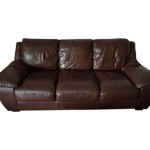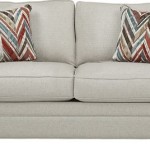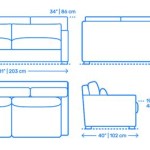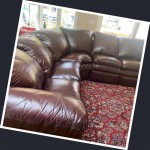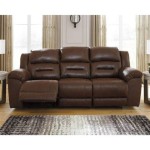Identifying Antique Sofa Styles: A Comprehensive Guide
Identifying antique sofa styles requires a keen eye, historical knowledge, and an understanding of furniture construction techniques. Successfully determining the era and origin of a sofa can significantly impact its value and appreciation. This guide provides detailed information to assist in identifying various antique sofa styles, covering key characteristics and historical context.
Understanding Key Features for Sofa Identification
Identifying an antique sofa goes beyond simply looking at its overall appearance. Several features, when examined collectively, offer clues about the sofa's origin and age. These include the frame construction, upholstery details, leg styles, arm designs, and any decorative elements present. Each of these aspects evolved over time, reflecting prevalent design trends and manufacturing capabilities of specific periods.
The internal frame, though often hidden, provides valuable insights. Examining the joinery methods used – dovetail joints, mortise and tenon joints, or the use of screws versus nails – can indicate the sofa's age. Hand-cut dovetails, for example, are characteristic of earlier pieces, while machine-made dovetails suggest a later period. The type of wood used in the frame can also be informative. Mahogany, walnut, and oak were popular choices at different times, depending on availability and regional preferences.
Upholstery fabrics and techniques provide another avenue for identification. Early sofas were typically upholstered with natural materials such as linen, wool, horsehair, or leather. The method of applying the upholstery, including the use of tacks, stitching styles, and the presence of stuffing materials like feathers or cotton batting, can also be indicative of the sofa's age and quality. Later periods saw the introduction of synthetic fabrics and more mechanized upholstery processes.
Leg styles are particularly distinctive and vary significantly across different periods. Cabriole legs, common in Queen Anne and Chippendale styles, feature an S-shaped curve. Tapered legs were prevalent in Neoclassical and Empire styles. Turned legs, often found in Victorian-era sofas, exhibit decorative carvings and profiles. Square or rectangular legs are characteristic of some Art Deco and Mid-Century Modern pieces.
The design of the sofa's arms is another important element to consider. Rolled arms, also known as scroll arms, are frequently seen in Victorian and Edwardian sofas. Straight arms, often with clean lines, are associated with Neoclassical, Art Deco, and Mid-Century Modern styles. Camelback sofas, characterized by a curved back resembling a camel's hump, feature arms that typically follow the same curve.
Finally, decorative elements such as carving, inlay, and applied ornamentation can help pinpoint the sofa's style and period. Elaborate carvings are often found on Victorian and Rococo Revival sofas. Neoclassical sofas may feature inlaid details or applied ornaments such as swags, garlands, and medallions. The presence or absence of these details, along with their specific design, offers crucial clues for identification.
Exploring Common Antique Sofa Styles
Several distinct sofa styles have emerged throughout history, each defined by specific characteristics and design influences. Understanding these styles is essential for accurate identification. Here are some of the most common antique sofa styles encountered by collectors and enthusiasts.
Queen Anne (c. 1702-1714): Queen Anne sofas are characterized by their graceful curves, cabriole legs (often ending in pad feet), and understated elegance. These sofas typically feature a high, arched back and upholstered in linen or damask fabrics. The overall design emphasizes comfort and refinement, reflecting the aristocratic tastes of the period. Ornamentation is usually minimal, with an emphasis on the flowing lines and balanced proportions.
Chippendale (c. 1750-1790): Chippendale sofas, named after the renowned furniture maker Thomas Chippendale, are known for their versatility and adaptability. They can feature straight legs, cabriole legs (often with claw-and-ball feet), or bracket feet. The backs of Chippendale sofas may be straight, serpentine, or camelback. The arms are typically rolled or shaped. Chippendale furniture often features intricate carvings, influenced by Gothic, Chinese, and Rococo styles.
Hepplewhite (c. 1780-1810): Hepplewhite sofas, named after George Hepplewhite, are characterized by their delicate designs and slender proportions. They typically feature straight, tapered legs, often with spade feet. The backs of Hepplewhite sofas are usually shield-shaped or oval. Ornamentation is minimal and often includes inlaid details or painted decorations. Hepplewhite furniture reflects the Neoclassical aesthetic, emphasizing elegance and restraint.
Sheraton (c. 1790-1820): Sheraton sofas, named after Thomas Sheraton, are similar to Hepplewhite sofas in their Neoclassical style but tend to be more rectilinear in design. They feature straight, tapered legs (often reeded or fluted) and rectangular backs. Sheraton furniture often incorporates inlaid details, painted decorations, and classical motifs such as urns, swags, and garlands.
Empire (c. 1800-1840): Empire sofas, popular during the Napoleonic era, are characterized by their bold, imposing designs and classical influences. They typically feature heavy, scrolled arms, claw or paw feet, and rich upholstery fabrics such as velvet or brocade. Empire furniture often incorporates decorative elements such as gilt bronze mounts, inlaid details, and classical motifs such as eagles, sphinxes, and laurel wreaths.
Victorian (c. 1837-1901): Victorian sofas encompass a wide range of styles, reflecting the eclectic tastes of the era. Common characteristics include ornate carvings, elaborate upholstery, and plush cushioning. Styles such as Rococo Revival, Gothic Revival, and Renaissance Revival were popular during this period. Victorian sofas often feature rolled arms, button-tufted upholstery, and decorative fringe or tassels.
Art Deco (c. 1920-1940): Art Deco sofas are characterized by their sleek, geometric designs, luxurious materials, and streamlined forms. They often feature straight lines, angular shapes, and stylized motifs inspired by ancient Egypt, the Far East, and modern industrial design. Common materials include exotic woods, chrome, and lacquered surfaces. Upholstery fabrics often feature bold patterns and geometric designs.
Mid-Century Modern (c. 1945-1965): Mid-Century Modern sofas are known for their clean lines, minimalist designs, and functional simplicity. They typically feature straight or gently curved lines, tapered legs (often made of wood or metal), and understated upholstery fabrics in neutral colors or bold geometric patterns. The emphasis is on creating comfortable and functional furniture that complements modern architectural styles.
Utilizing Resources for Further Research
While this guide provides a foundation for identifying antique sofa styles, continued learning and research are crucial for developing expertise. Several resources are available to assist in this process, including books, museum collections, online databases, and expert appraisers.
Numerous books dedicated to antique furniture offer detailed information on various styles, periods, and manufacturing techniques. These books often include photographs, illustrations, and historical context, providing a comprehensive understanding of furniture design evolution. Consulting multiple sources is recommended to gain a well-rounded perspective.
Museum collections are invaluable resources for studying antique sofas firsthand. Many museums feature furniture galleries showcasing examples of different styles and periods. Examining these pieces allows for a closer look at construction details, upholstery techniques, and decorative elements, enhancing one's ability to identify and appreciate antique furniture.
Online databases and websites dedicated to antique furniture provide access to a wealth of information, including photographs, descriptions, and price guides. These resources can be particularly helpful for researching specific styles or identifying similar pieces. However, it's essential to verify the accuracy of information obtained from online sources, as not all websites are equally reliable.
Consulting with expert appraisers or antique furniture dealers is highly recommended for accurate identification and valuation. These professionals possess specialized knowledge and experience in assessing antique furniture, providing insights that may not be readily available through other resources. A professional appraisal can also help determine the authenticity and condition of a sofa, which are crucial factors in determining its value.
Furthermore, attending antique shows, auctions, and furniture fairs provides opportunities to examine a wide range of antique sofas and interact with dealers and collectors. These events offer valuable learning experiences and networking opportunities, fostering a deeper understanding of antique furniture and its market value.
By combining knowledge of key features, understanding common styles, and utilizing available resources, enthusiasts can develop the skills necessary to identify antique sofa styles accurately and confidently. This knowledge not only enhances appreciation for antique furniture but also assists in making informed decisions when buying, selling, or collecting these historical pieces.

Sofa Style Guide Knowledge Center Antiques Design Timothy Corrigan

Identifying Furniture Styles Tom S Fine And Collectables
:max_bytes(150000):strip_icc()/CanapeAConfidanteSofa-56a018883df78cafdaa010b3.jpg?strip=all)
11 Antique Couch Sofa And Settee Styles

How To Identify Antique Furniture Buyer S Guide Styylish
:max_bytes(150000):strip_icc()/Chesterfield-57a981673df78cf459cce958.jpg?strip=all)
11 Antique Couch Sofa And Settee Styles
:max_bytes(150000):strip_icc()/ChippendaleCamelBack-56a018885f9b58eba4aeeabd.jpg?strip=all)
11 Antique Couch Sofa And Settee Styles

Identifying Furniture Styles Tom S Fine And Collectables
:max_bytes(150000):strip_icc()/EastlakeSettee-583b63873df78c6f6a1b2391.jpg?strip=all)
Identifying Eastlake Furniture From The Victorian Era

Identifying Styles Of Furniture Legs House Design Period
How To Identify Date Value Antique Chairs A Beginner S Guide Paolo Moschino

